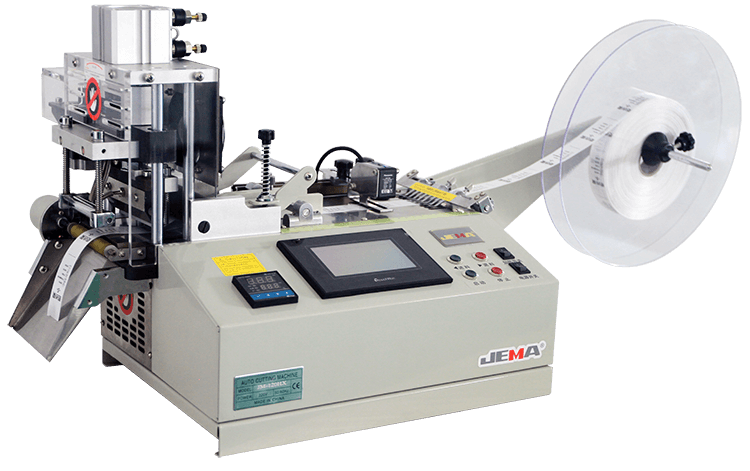Computer tape cutting machine (cold, hot) JM-120LR
Fully automatic cutting, simple operation, wide application range, high cutting quality, cold ...
Importance of Stability in Continuous Operation
In modern production environments where demand for high efficiency and low downtime is critical, the operational stability of processing equipment plays a pivotal role. Among such machinery, the Elastic Tape Cutting Machine is often expected to operate continuously for long hours, especially in mass production lines that deal with elastic tapes used in clothing, medical supplies, and industrial applications. Stability under continuous use is not only a question of whether the machine can run without stopping, but also whether it can maintain consistent precision, speed, and quality over extended periods.

Mechanical and Electrical Endurance Factors
Stability in continuous operation depends heavily on both mechanical and electrical design factors. Mechanically, the drive system, feed rollers, blade assembly, and tape guides must be engineered with durability and wear resistance in mind. Materials such as hardened steel or aluminum alloy are often used in high-wear parts to resist fatigue and deformation. From the electrical perspective, motor control systems, sensors, and processors must be capable of sustained operation without overheating or signal degradation. Machines with built-in overheat protection, fan-cooled motors, and overload sensors tend to show greater reliability in non-stop production conditions.
Heat Accumulation and Component Fatigue
One of the common threats to stability during prolonged operation is heat accumulation. Even with modern cooling systems, prolonged cutting can generate frictional heat in blades and mechanical joints. If not properly managed, this can result in thermal expansion, causing minor misalignments or increased wear. Additionally, electronic boards and power modules are susceptible to heat-related failures. Component fatigue is another factor that may reduce long-term stability. Bearings, belts, and blades endure repetitive stress, and their performance can gradually deteriorate without proactive maintenance.
Role of Software and Automation in Enhancing Stability
Advanced cutting machines often include embedded software and automation systems that significantly contribute to long-term stability. Intelligent control software can monitor parameters such as motor temperature, blade sharpness, and tape feed consistency in real time. These systems can trigger alerts or adjust cutting parameters automatically to maintain consistent performance. Automated calibration routines executed periodically during long shifts also help keep the cutting precision intact. Machines equipped with such features generally display greater resilience during high-duty cycles.
Importance of Blade Sharpness and Alignment
Continuous operation demands attention to blade maintenance. A dull blade not only decreases cutting quality but also puts more strain on the motor and feed mechanisms, accelerating wear and causing vibrations. Regular blade sharpening or replacement ensures smoother cutting action, reducing mechanical stress and preserving machine balance. Proper blade alignment is equally essential, as any misalignment—exacerbated by vibration or thermal effects—can quickly destabilize cutting accuracy over time.
Material Handling Consistency and Feed Mechanism Stability
In continuous workflows, one of the key aspects that affects machine stability is the material feeding system. Tapes must be delivered at a constant tension and alignment. High-end machines often incorporate servo-driven feed rollers or vacuum-based systems that ensure steady material flow, preventing jerks or misfeeds. If the tape feeding is unstable, it could cause cutting errors, blade jams, or operational pauses. Therefore, the integrity of the feed mechanism is critical to the sustained stability of the cutting system.

Fully automatic cutting, simple operation, wide application range, high cutting quality, cold ...
.png?imageView2/2/w/500/h/500/format/jp2/q/100)
Fully automatic cutting, simple operation, wide application range, high cutting quality, cold and...

Fully automatic cutting, simple operation, wide application range and high cutting quality. ...

Fully automatic cutting, simple operation, wide application range and high cutting quality. ...